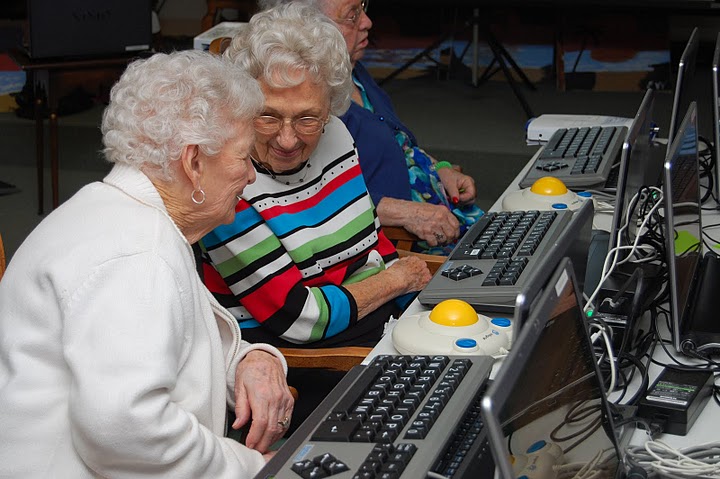
Once it was monolithic print media that communicated to everyone what was going on. The Los Angeles Times landed on doorsteps of apartment buildings or homes in West Hollywood seven days a week, with the scoop on what was happening in local government and the state capital as well as overseas. Nowadays, that newspaper’s circulation has dwindled, and the many of the sort of people who once would have turned to it for the news now go online or watch TV to find out what’s going on.
The City of West Hollywood’s 2013 Community Survey showed local residents today get their information through a variety of media — print, television, social media, the mail and the Internet. Given that, how does the city in this day and age communicate to its seniors what they need to know about things as varied as the CityLine shuttle schedule, the affordable housing waiting list and when that play is being performed at Fiesta Hall? Where once the assumption might have been that older people could be reached only in print, today many of the 60-somethings themselves were digital pioneers and still prefer that medium.
Communications and information is one of the eight subjects addressed in a five-year plan designed to help West Hollywood residents “age in place,” enjoying life in their own homes as long as possible before having to move to a retirement or senior center. The planning effort is being directed by Elizabeth Savage, director of the city’s Department of Human Services and Rent Stabilization. Currently 15% of the city’s residents are 65 or older and 51% of those over the age of 65 report having a disability.
In addition to communications and information, other issues being addressed are open space and buildings (outlined in a previous article in WEHOville), transportation (also discussed in a previous WEHOville article), housing (addressed here), respect and inclusion, civic participation and employment, health and community and community services and social participation. This article is the fourth in a series that describes each of the eight elements of the proposed aging in place strategy.
A draft of the strategic plan is being circulated around city boards and commissions to get community feedback. It notes that the involvement of older adults in civic life is high, with their memberships on various boards and commissions and attendance City Council meetings. The city does frequent mailings to notify residents of special events or issues and produces instructional pamphlets on subjects such as rent stabilization.
But the draft report notes that as a resident ages, he or she might also need more personal help to obtain and understand important information. This could include finding out you can compare internet packages on usave.co.uk to save money to get online. That would come from service providers who can answer those residents’ questions or steer them to the right place to get those answers.
The communications and information strategy is divided into three sets of proposals:
CULTURE OF RECEIVING HELP
Consider launching an “ask for help” media campaign that lets older residents, who may be reluctant to ask for help, know that it’s okay to do so.
Develop a support system where individual elderly residents can be connected with an individual who can address their questions. An important aspect would be connecting with those who are socially isolated in person, through social circles, through faith-based groups or groups such as Neighborhood Watch or with younger volunteers.
Encourage planning for medical, financial and other support systems that speak to the needs of West Hollywood’s diverse communities — the Russian-speaking older population, LGBT people, single adults.
PRINTED RESOURCE INFORMATION
Develop specialized resource guides for family members and caregivers that outline services available in the community, speak to the general challenges of aging and give information about benefit for same-sex partners.
Make the printed information materials easy to access and design them in a way that they are easy to read and understand.
Distribute print guides to resources for the city’s older residents throughout the community. They might be made available at local social services organizations, churches and hospitals.
DIGITAL RESOURCE INFORMATION
Provide computers at Plummer Park Community Center and West Hollywood Library for those who don’t have them and aren’t very digitally literate. Also help those who aren’t digitally literate with in-home assistance.
Provide geographically targeted resource guides for older adults and their caregivers and family members and the social service agencies that serve them.
Use digital tools to get information in front of those who are hearing impaired.
Previously: Affordable housing.
Monday: Civic participation and employment
